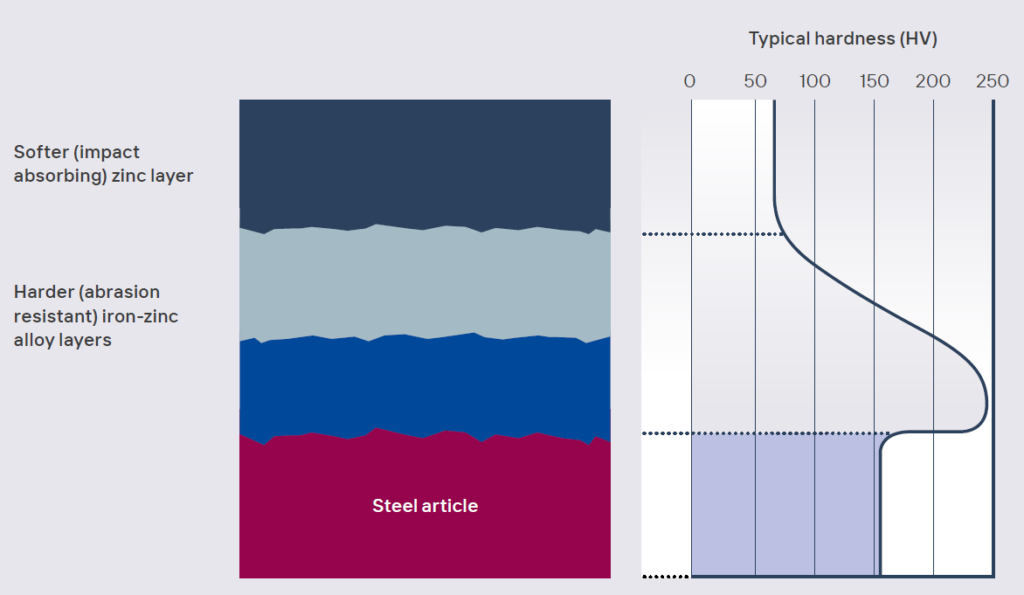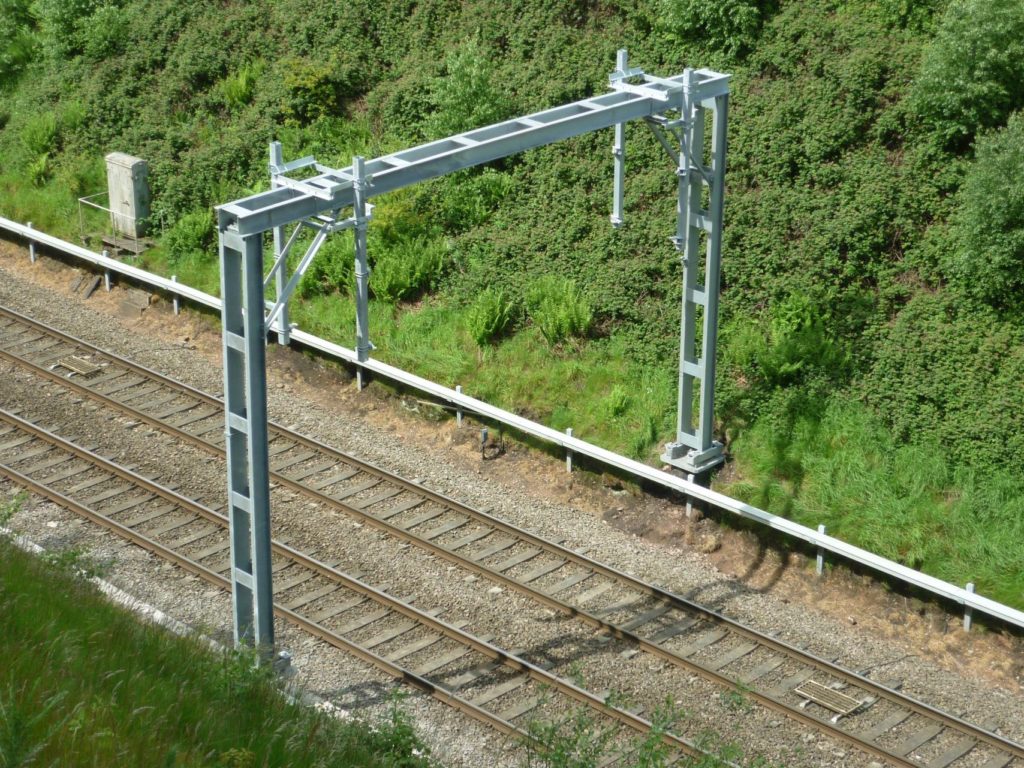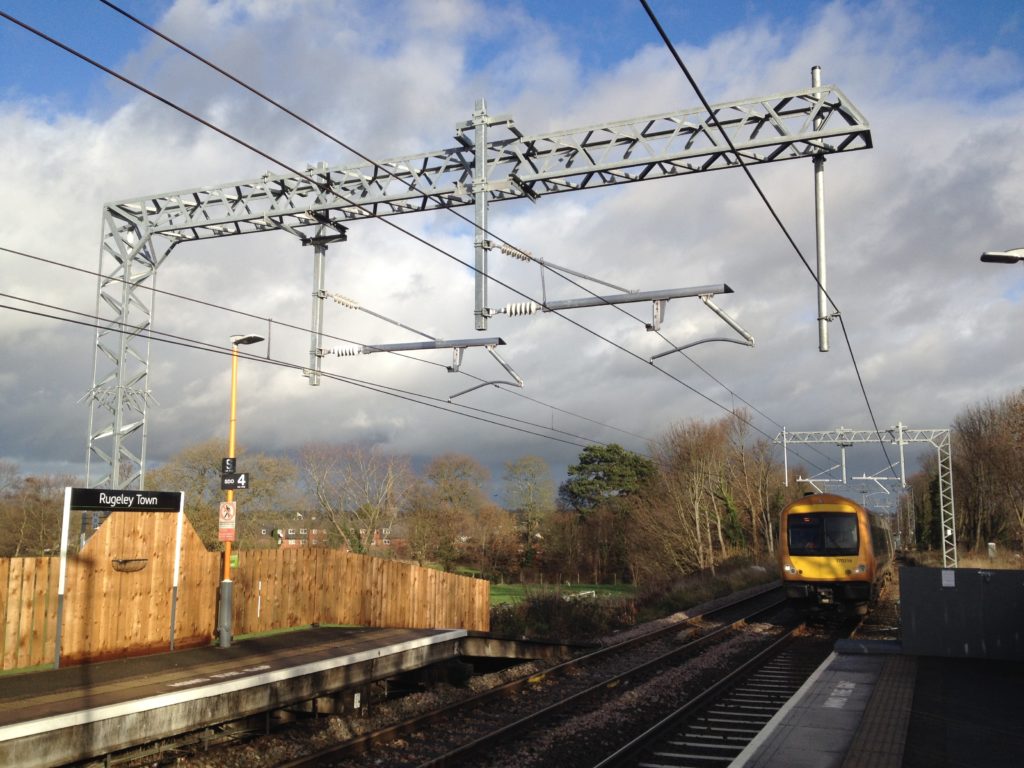When constructing transport infrastructure fit for the next 120 years, we must select products known for their long-term structural soundness and which indicate their state of repair easily and clearly.
As UK rail transport undergoes a comprehensive overhaul, it is important that we choose materials with proven performance and which can be trusted to deliver. For Galvanizers Association, the idea that performance should be ‘seen to be believed’ is an important part of the equation, and makes galvanized steel an ideal partner for network upgrades and expansion, HS2, and beyond.
Durable and more
Galvanized steel has, for decades, maintained a reputation for strength and durability, and is a ubiquitous material that contributes to countless miles of the UK rail network. Galvanized steel is used abundantly in signalling infrastructure, overhead line support, steelwork for concourse structures, and as a reliable zero-maintenance solution for station construction and platform architecture.
Without doubt, the relationship between rail transport and galvanized steel is longstanding and trusted. As the UK embarks upon vital investment in transport infrastructure, it is worth remembering another key feature of galvanized steel: the visibility of its proven performance.

Seen to be believed
Performance data for galvanized steel is readily available from the Galvanizers Association, the industry’s representative body. An expert technical team can provide detailed advice on compiling specifications for galvanizing steel, reviewing design details to maximise the benefits of galvanizing, as well as advising on galvanizing standards. Numerous guides have been produced to support engineering and construction professionals, and which give confidence in the longevity of the corrosion protection that hot dip galvanizing affords.
Publications like the Galvanizers Association UK and Ireland Atmospheric Corrosion Map for Galvanized Steel provide up-to-date performance data for the atmospheric corrosion rate of hot dip galvanized steel. It can also be used to find the average life of a coating within a 10km2 area. Other assets support the use for galvanized steel as a circular, cost effective, and regenerative material, and assist construction professionals in understanding the benefits and process of hot dip galvanizing.
Inherent benefits
The inherent benefits of hot dip galvanizing are easily quantified. Galvanizing provides a high level of barrier protection to all internal and external steel surfaces for many components used within the rail industry. The low atmospheric corrosion rate, typically 0.5-1.5mm per year throughout most of the UK and Ireland, means that a galvanized coating can often afford critical UK infrastructure a coating life of about 100 years or more. Galvanizing also offers sacrificial protection, which means that in the event that scratches or small chips to a galvanized coating occur they will never expand or be under-cut by rust – a valuable benefit not afforded by coatings such as organic paint systems.
Hot dip galvanizing ensures a coating which has a strong metallurgical bond to the steel and which forms a system of alloy layers. These are wear resistant and cushion structures against impact, making galvanized steel resistant to mechanical damage during handling, storage, transport, and erection.


Ease of inspection
When we look to build infrastructure projects for the longterm, trust and proven performance are key. Aside from the longevity of galvanized steel, which has been proven in many installations across UK transport, there are proven reasons to galvanize steelwork. Among them is that galvanized steel has the advantage of being relatively easy to inspect. Coating thickness checks can be readily conducted to enable the coating’s performance and life to be accurately determined in any given environment. Techniques for such measurements are documented in standards including EN ISO 2178.

In recent years other systems have tried to challenge the record of galvanized steel. Weathering steel, for example, can potentially offer a long term, maintenance-free solution to corrosion, but its performance is strongly dependent upon the formation of the protective rust patina. This is in turn affected by both its service environment and the need for regular wetting and drying cycles. As a result, biannual inspection of weathering steel structures by an experienced inspector may be required for up to 12 years. Additional inspections may also be required at critical points on a six yearly basis for up to 18 years, so as to assess the loss of steel section that has taken place.
Similarly, paint coatings on steelwork can offer a good level of barrier protection. However, they damage relatively easily, resulting in the need to conduct significant on-site repairs. In addition, even good quality paint systems as designated in EN ISO 12944 achieve relatively short lives of circa 25 years. By default, this builds in costly maintenance schedules during the life-time of a painted structure.
Viewed over the long term, hot dip galvanizing has a long list of systematic benefits that are both reliable and quantifiable. As we look to upgrade our UK Rail Network across regions, landscapes, and variable climactic conditions, materials that can be easily inspected, trusted and left to do the job will offer significant advantage.
For more information please visit: www.galvanizing.org.uk/rail

